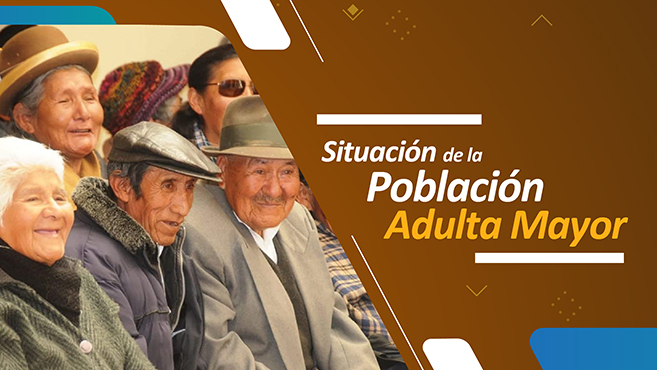92.7% of the older adult population of the country have some health insurance
Nota de prensa
27 de December de 2024 - 9:00 a. m.
The National Institute of Statistics and Informatics (INEI) in the technical report Situation of the Older Adult Population, informed that during the third quarter of 2024, from the total of the population of 60 years old and older, 92.7% have some health insurance whether public or private, a figure superior in 1.0 percentage point, compared to the same quarter of the year 2023 (91.7%).
Regarding this issue, the greater coverages of this population group to some health insurance were registered in the residents of the rural area (93.1%), followed of Lima Metropolitan area (92.7%) and of the rest urban area (92.5%).
In addition, it was informed that according to type of health insurance, 36.2% of the older adults had access just to EsSalud and 51.2% had access just to the Comprehensive Health Insurance (SIS). Compared to the same quarter of the last year, the proportion of older adults that went to the SIS increased in 1.3 percentage points; meanwhile that the EsSalud insured persons did not showed significant changes.
42.4% of the households have among their members at least one person of 60 years old and older
During the third quarter under analysis, 42.4% of the households of the country have among their members at least one person of 60 years old and older; a higher figure in 0.5 percentage point, compared to the same quarter of the year 2023 (41.9%).
In Lima Metropolitan area, the proportion of households with some older adult person reached 45.8%, in the rural area, 45.5% and in the households of the urban rest area 38.7%.
26.1% households that have an older adult person as chief of the household, are single housing
The INEI informed that from the total of households that have as chief of the household a person of 60 years old and older, 26.1% of the households are single housings (composed just for the older adult), according to sex, 40.1% of single households are led by women, being 23.4% percentage points more than those constituted by men (16.7%).
Likewise, 47.2% are households are nuclear type, which are constituted by a couple and their children or without them. 20.7% of households are extended, it means, to the nuclear household are added other relatives, 5.0% are households without nucleus (conformed by a chief without spouse nor children, that lives with other persons with which can or cannot have family ties) and 1,0% are composed households, it means that they are inside the household besides of the relatives, other members that are not relatives.
22.8% of older adult chiefs of stated they are beneficiaries of the Pension 65 social program
During the third quarter of 2024, 22.8% of the household chiefs of 60 years old and older declared hey are beneficiaries of the Pension 65 social program, which meant a growth of 4.0 percentage points, compared to the registered in the same quarter of the last year (18.8%).
41.7% of the older adult population with some health problem sought medical attention in an establishment
During the quarter July-August-September of the year 2024, the older adult population with some health problem that sought medical attention in an establishment was of 41.7%. According to place or consultation establishment, 13.7% attended the establishments of the Ministry of Health (MINSA), 12.6% sought attention in pharmacy or apothecary, 7.8% in establishments of the Social Health Insurance (EsSalud) an 5.4% went to a private practice, among others.
From the total of population that represents some disability, 45.1% are older adults
The INEI informed that from the total of the population that have some disability, 45.1% are older adults, it means, they are 60 years old and more. The incidence of this health problem was higher in the rural area (48.7%) than in the urban area (44.1%).
In the case of women that have some disability, 55.1% are older adults; while, men have some disability represents 36.3%, which shows a difference of 18.8 percentage points among both sexes, where the older adult women are whom most have some type of disability.
88.8% of the total households led by an older adult, have some member with cellphone
From the households that have as chief of the household an older adult person, 88.8% have some member that has a cellphone. In the case of the urban area, it reached 92.9%, and in the rural area, reached 75.4%. The difference among both areas is of 17.5 percentage points, in favor of the urban area. By comparing with the same quarter of the year 2023 it was observed an increase of 0.4 percentage point.